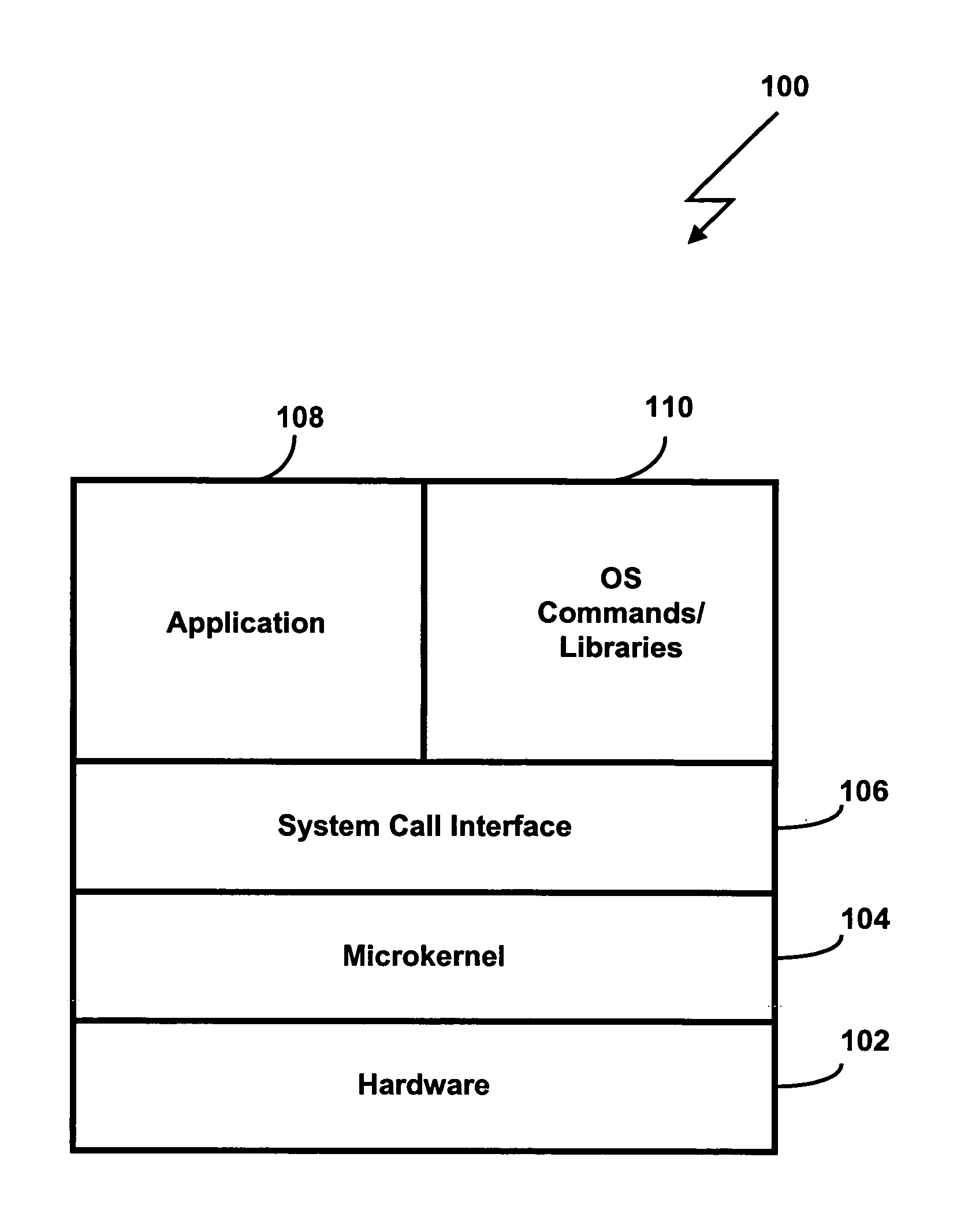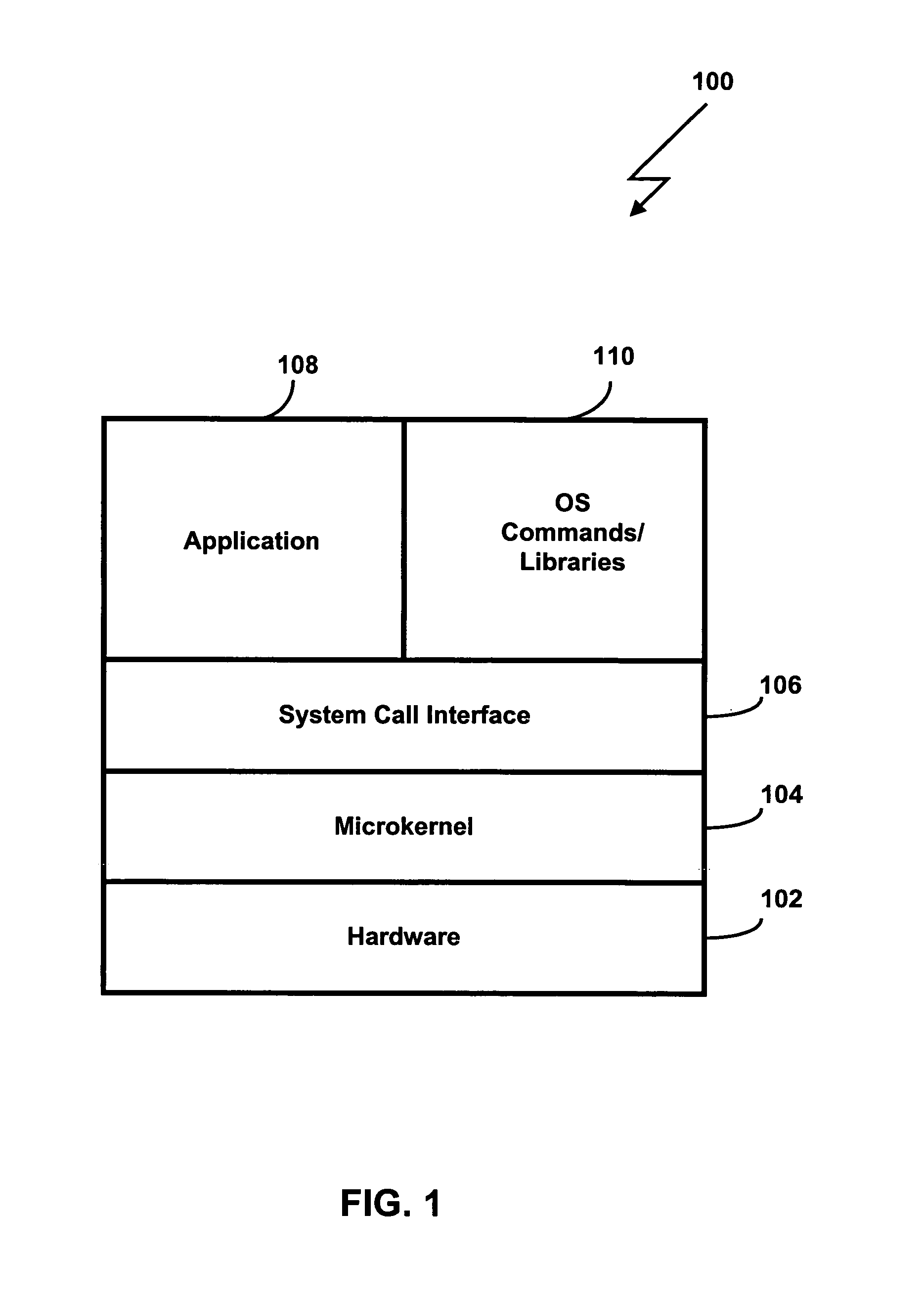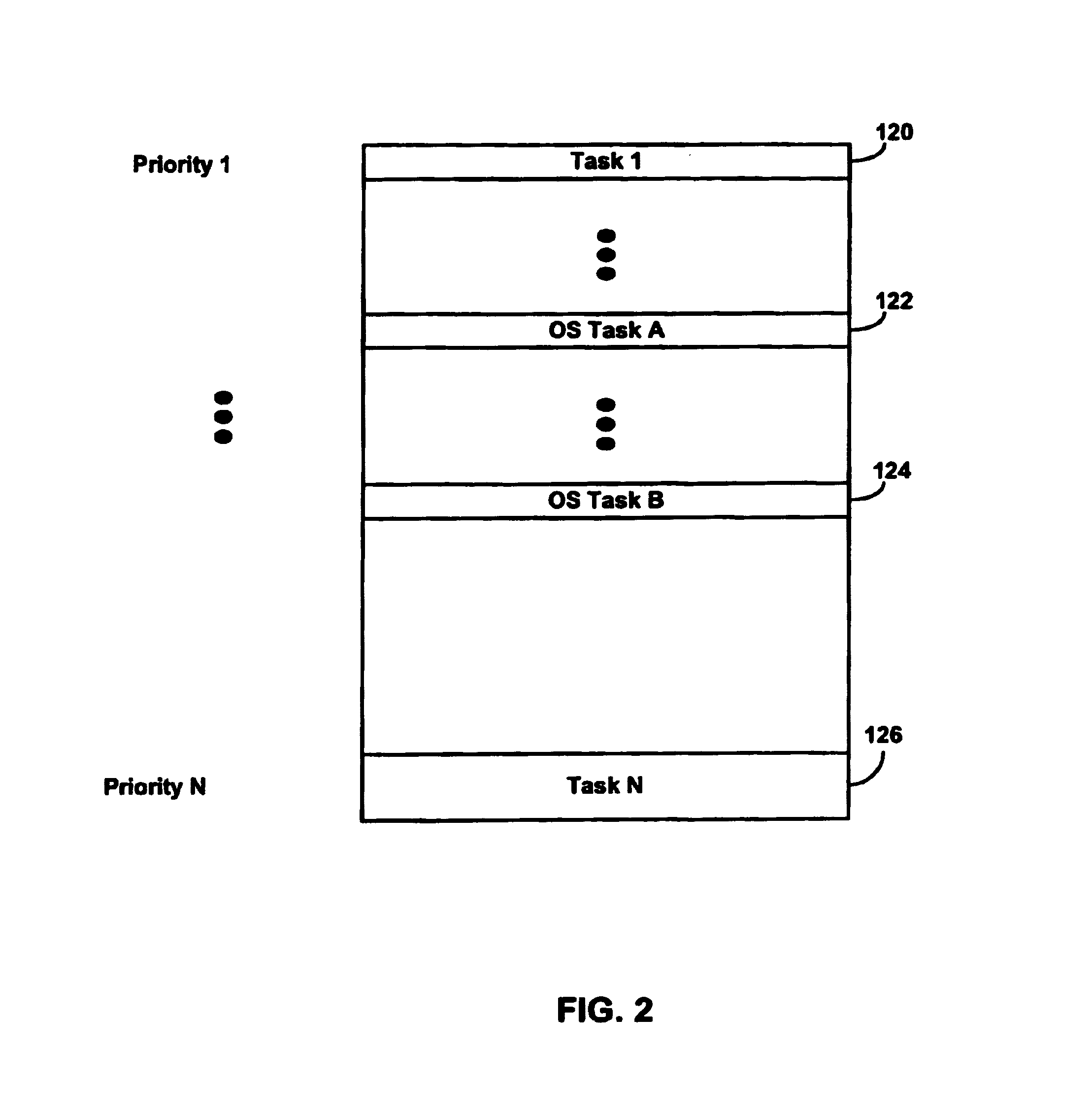Microkernel for real time applications
a micro-kernel and real-time technology, applied in computing, multi-programming arrangements, instruments, etc., can solve the problems of destroying the purpose of real-time nature of the kernel running as a process, and achieve the effect of simple tuning process, high degree of concurrence, and greater concurren
- Summary
- Abstract
- Description
- Claims
- Application Information
AI Technical Summary
Benefits of technology
Problems solved by technology
Method used
Image
Examples
Embodiment Construction
[0031]Referring now to FIG. 1, various layers executing in a computer environment 100 are shown. The computer environment 100 has a hardware layer 102, a microkernel layer 104, a system call interface layer 106, an application portion 108 and an operating system command / library portion 110.
[0032]The microkernel layer 104 interfaces with the hardware layer 102. The microkernel layer 104 runs at a kernel level where the microkernel layer can execute privilege operations to allow the kernel to have full control over the hardware and user level programs. The application portion 108 and the OS command / library portion 110 run at a user level. The user level interacts with the kernel level through various systems call interfaces. The user level executes at an unprivileged execution state of the hardware and thus are executed in a restricted environment, controlled by the microkernel layer. Hence, the microkernel layer prevents simultaneously executed programs from interfering with one anot...
PUM
 Login to View More
Login to View More Abstract
Description
Claims
Application Information
 Login to View More
Login to View More - R&D
- Intellectual Property
- Life Sciences
- Materials
- Tech Scout
- Unparalleled Data Quality
- Higher Quality Content
- 60% Fewer Hallucinations
Browse by: Latest US Patents, China's latest patents, Technical Efficacy Thesaurus, Application Domain, Technology Topic, Popular Technical Reports.
© 2025 PatSnap. All rights reserved.Legal|Privacy policy|Modern Slavery Act Transparency Statement|Sitemap|About US| Contact US: help@patsnap.com



